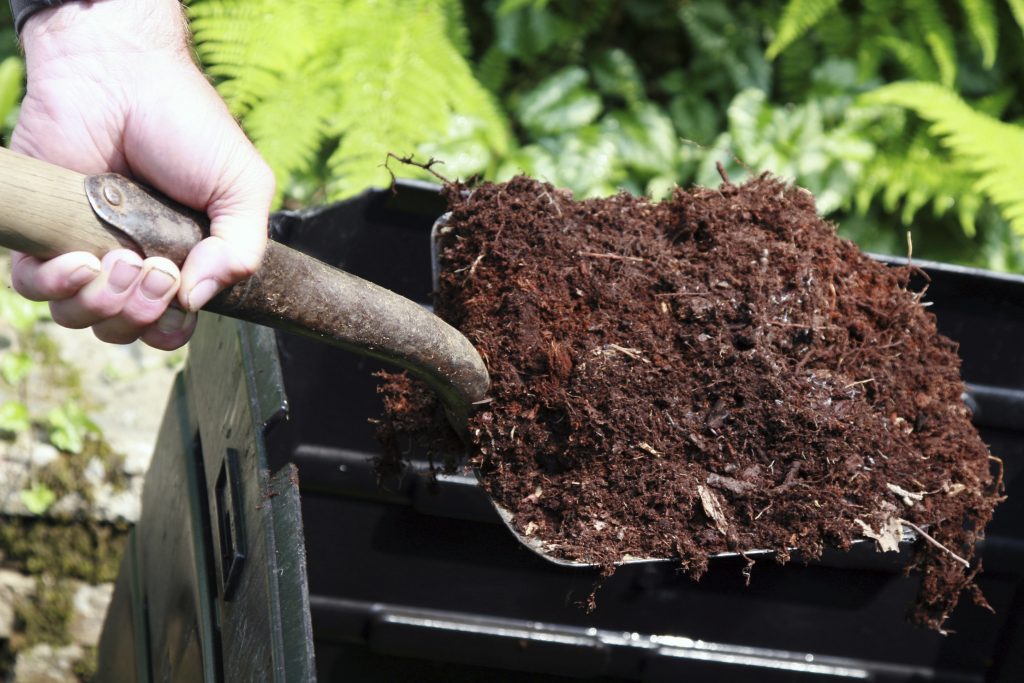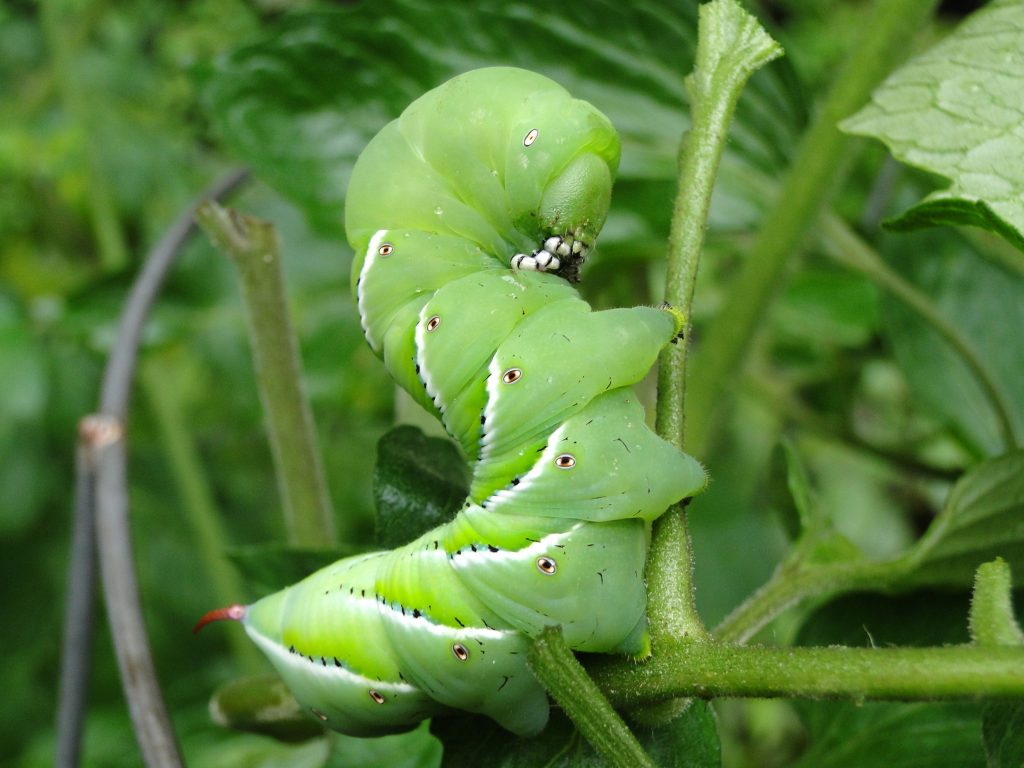More Key Actions
The four primary soil health concepts are described on the Grow Soil Health page, but there are other important actions that need to be a part of your overall soil health plan to protect both soil and water quality. These additional key actions work hand-in-hand with the primary soil health concepts to grow your soil health.
Soil Testing

Before you spend too much time and money investing in your soil, you might want to know what’s already going on with your soil. The easiest, and most comprehensive, way to find out is to have your soil tested. Soil testing means sending a sample of your garden’s soil to a laboratory for analysis to learn what levels of nutrients currently exist. The test results also provide recommendations about what your garden soil may need (in terms of phosphorus, potassium, and pH adjustments, etc.) to be healthy. Professional soil tests typically cost around $20, depending on how simple or complex of an analysis you want conducted. The soil report you receive will allow you to plan your next steps.
Purdue University Extension provides a list of Certified Soil Testing Laboratories for Indiana and surrounding states. The labs provide instructions on how to collect and send a sample. It’s easier than you may think and it can save time and money in the end.
Compost

Compost is a mixture of materials high in organic matter that is used to enhance soil quality. Composting takes the natural process of decomposing organic materials and puts it in a controlled environment. The finished product, compost, is then typically added to gardens to increase the amount of organic matter in the soils. In addition to the significant amount of organic matter it supplies to the soil, compost provides many other benefits. If you have a heavy, clay soil, compost increases infiltration and permeability (the ability of water to get into the soil), which reduce erosion and runoff. If you have a sandy soil, compost improves the water holding capacity of the soil, thus reducing water and nutrient loss. Compost also encourages beneficial earthworms, insects, and microbial activity in the soil. In fact, earthworms, insects, and microbes love compost!
Compost can be purchased from local garden centers or retailers in bulk loads or in bags; however, you can also make your own compost using yard and food waste from your kitchen or garden. By composting your own yard and food waste, you reduce the amount of degradable organic material sent to landfills each year and your garden and soil benefit! Before you add compost to your garden, be sure to have your soil tested first. Even if you don’t have a garden, you can add compost to the landscape beds around your yard.
If you choose to make your own compost, do a little research first to find out which waste materials can be composted, the different methods of composting, and how long it will take before the compost is ready to apply on your garden. Purdue Extension has a helpful fact sheet on different methods and uses of compost. If you’re interested in composting with earthworms, also known as vermicomposting, Purdue Extension has a fact sheet to help get you started. There are many other great resources out there, either on the internet, at the bookstore, or in your local library. Give it a try, it’s easier than you think. And remember, by composting you’re keeping these materials out of the landfills and municipal waste water streams (think about where your garbage disposal waste ends up).
Compost tea is yet another form of compost. Like teas you drink, compost tea is made by steeping finished compost in water. Compost tea is often used as a foliar spray to suppress foliar diseases or as a soil drench to increase the amount of nutrients available to the plant.
Fertilizers, Herbicides, and Pesticides
While the principles of soil health are great for reducing the need for chemical treatments, some situations may require the addition of fertilizers to improve deficiencies or pesticides to rid of unwanted pests. An overall long-term goal of soil health management is to remove or significantly lessen the need for chemicals by encouraging nutrient recycling and healthy diverse soil microbes (bugs). Hang in there, it may take a little time, but in your efforts will make a big difference!
Overuse or over application of fertilizers, herbicides, and pesticides can pose potential health and environmental hazards, so be sure to follow the instructions on the label and these helpful tips:
- Have your soil tested before applying any fertilizers. Soil chemistry can vary widely, and your soil cannot use anything it doesn’t need. Too much fertilizer can kill your plants and it can negatively impact your soil fertility. Unused fertilizer might also runoff of your garden or yard into nearby lakes and streams where it can have a big impact on water quality.
- If your soil test reveals a deficiency that needs to be corrected before planting, be sure you follow the directions closely and only apply as much fertilizer is necessary to do the job. In this case, more isn’t better. To learn more about fertilizers, check out Clear Choices’ page about fertilizers.
- The same goes for herbicides and pesticides: Always follow the manufacturer’s recommended application rates and practices. Some pesticides will kill good bugs as well as bad bugs, so it’s important to know how and when to use these products. If you’re applying pesticides to vegetable crops, you will also want to make sure you read the label so that you know when it is safe to consume the foods after you have applied a pesticide.
Pest Management

Unfortunately, pests are one problem that all gardeners and growers will likely have to deal with at some point during their gardening days. The word ‘pest’ is used collectively to represent anything that can have a negative effect your crop – insects, diseases, weeds, rodents, and animals. The most common way to deal with these pests is by using Integrated Pest Management (IPM). IPM uses a variety of common-sense steps that reduce reliance on pesticides, all while minimizing the risks to people and the environment. Integrated Pest Management also goes by several other names, including Environmental Pest Management and Integrated Pest Control.
IPM starts with knowing your pests. Many insects are beneficial and many plants that look like weeds can be good native plants. Learning how to identify some of the most common pests and their lifecycles is crucial to winning the battle against them. Once you know what to look for, make a habit of inspecting your garden in order to catch any potential problems before they get out of control and require a larger corrective action. It is always helpful to keep notes on what you find while doing you’re inspection, so you can remember what you found, where, and when and keep infestations at bay.
While pests must be fought once they appear, diseases and weeds are often able to be prevented in advance. There are a number of strategies you can employ to help prevent such problems:
- Right plant, right site. Make sure you are choosing plants that are not only appropriate for your climate, but also for your particular site conditions.
- Start with healthy plants. Weak plants are often vulnerable to disease. It might be better to pass up the last tomato plant on the store shelf if it risks infecting the rest of your garden with a disease or welcomes an opportunistic insect.
- Clean your tools. Use a 10% chlorine bleach solution to disinfect your tools between uses. Make sure you keep them clear of debris too.
- If you remove a diseased plant, do not compost it. Burn it, bury it, or dispose of it in the trash instead. This will keep the disease from spreading to other plants.
- If you have to water, try to keep leaf surfaces dry. Do this by keeping the stream of water at the soil line or by using drip irrigation or soaker hoses. Wet leaves can lead to fungal infections. Drip irrigation also saves money, since it puts more water directly into the ground.
- Keep your plants adequately spaced. This may require thinning, or removal of extra plants, to keep them spread out. Space between plants allows for more air movement and reduces the stress on individual plants.
- Rotate your crops. As mentioned in the Diversify and Rotate section, crop rotation is vital to maintaining vigorous plants that are able to fight off pests on their own.
- Limit weeds by using a cover crop, natural mulch, no-till planting, spot treatment, and hand pulling. Don’t let weeds that pop up go to seed!
- Remember that insecticides can also kill beneficial insects that help keep the bad ones in check. If you find mites or other soft-bodied insects, an insecticidal soap or horticultural oil can eliminate the population. Larger bugs can be removed by hand. If you have space, keep a refuge area with plants that attract beneficial pollinators and predator insects. If you do have to use an insecticide, make sure it is labeled for use on food crops, and follow the application instructions closely in order to prevent any potential damage to your soil, crops, wildlife, or yourself.
- Try using floating row covers to exclude pests.
- Install beetle banks or pollinator habitats next to garden areas to increase beneficial/predating insects.
- Learn more HERE.
Turfgrass Replacement
If you don’t have a garden and still want to make a difference to soil health, consider replacing part (or all) of your lawn with native plants. Native plants are species of plants that have adapted to Indiana’s climate over thousands of years. They typically don’t need chemicals to help them grow, can tolerate varying temperature changes, and have very deep roots that allow them to be more drought resistant. Native plants have also developed defenses against harmful native insects and can serve as habitats for native wildlife, such as butterflies, songbirds, and hummingbirds. The deep roots of native plants are great for soil health because they create channels in the soil, which allows water to soak in quickly reducing runoff and erosion. Typical turfgrass lawns don’t have the deep root system that native plants have and therefore rainfall often runs right off a turfgrass lawn. Learn more about native plants, where to get them, how to plant them, and what to expect when planting them, check out the Clear Choices’ page about native plants.